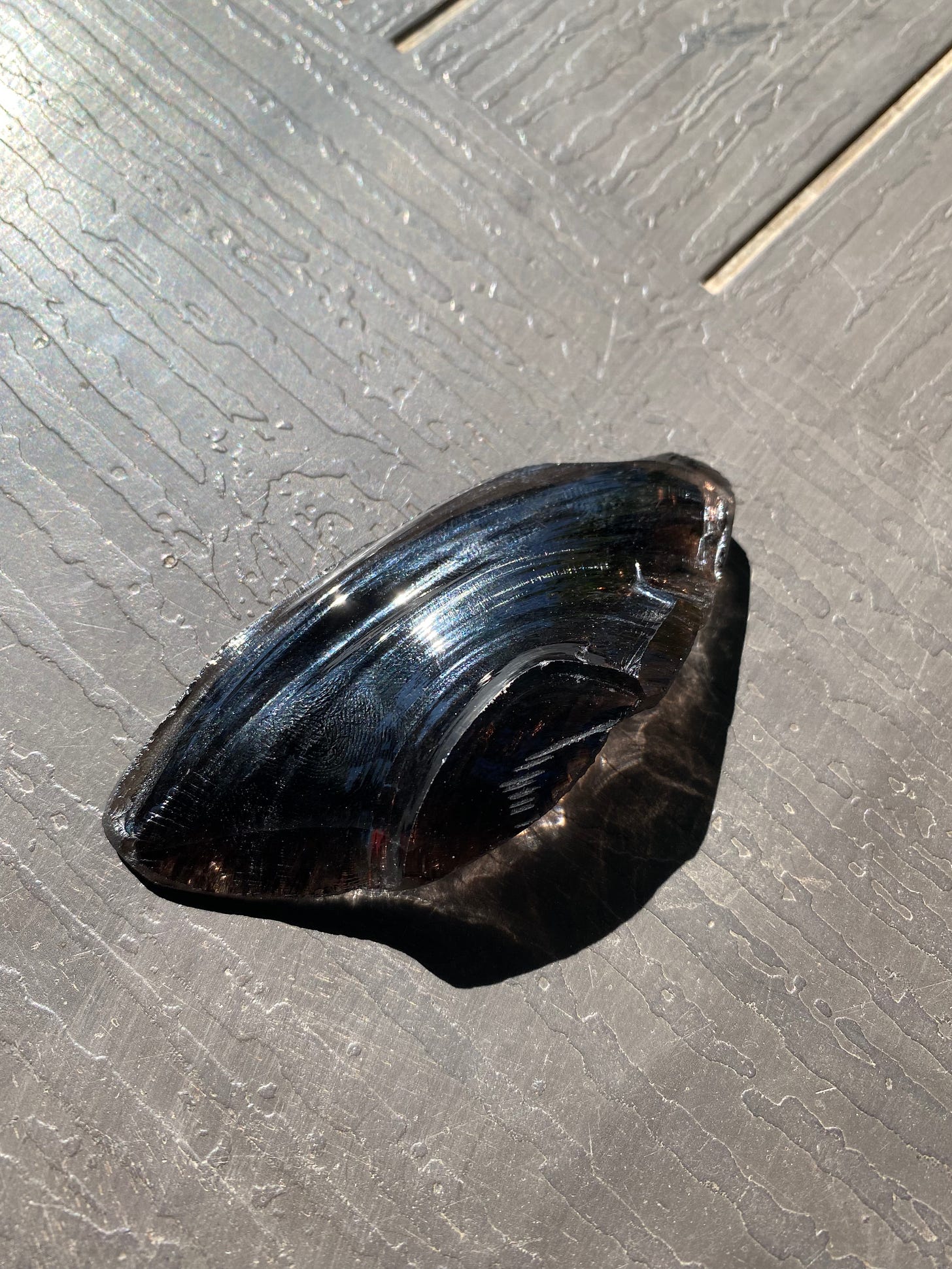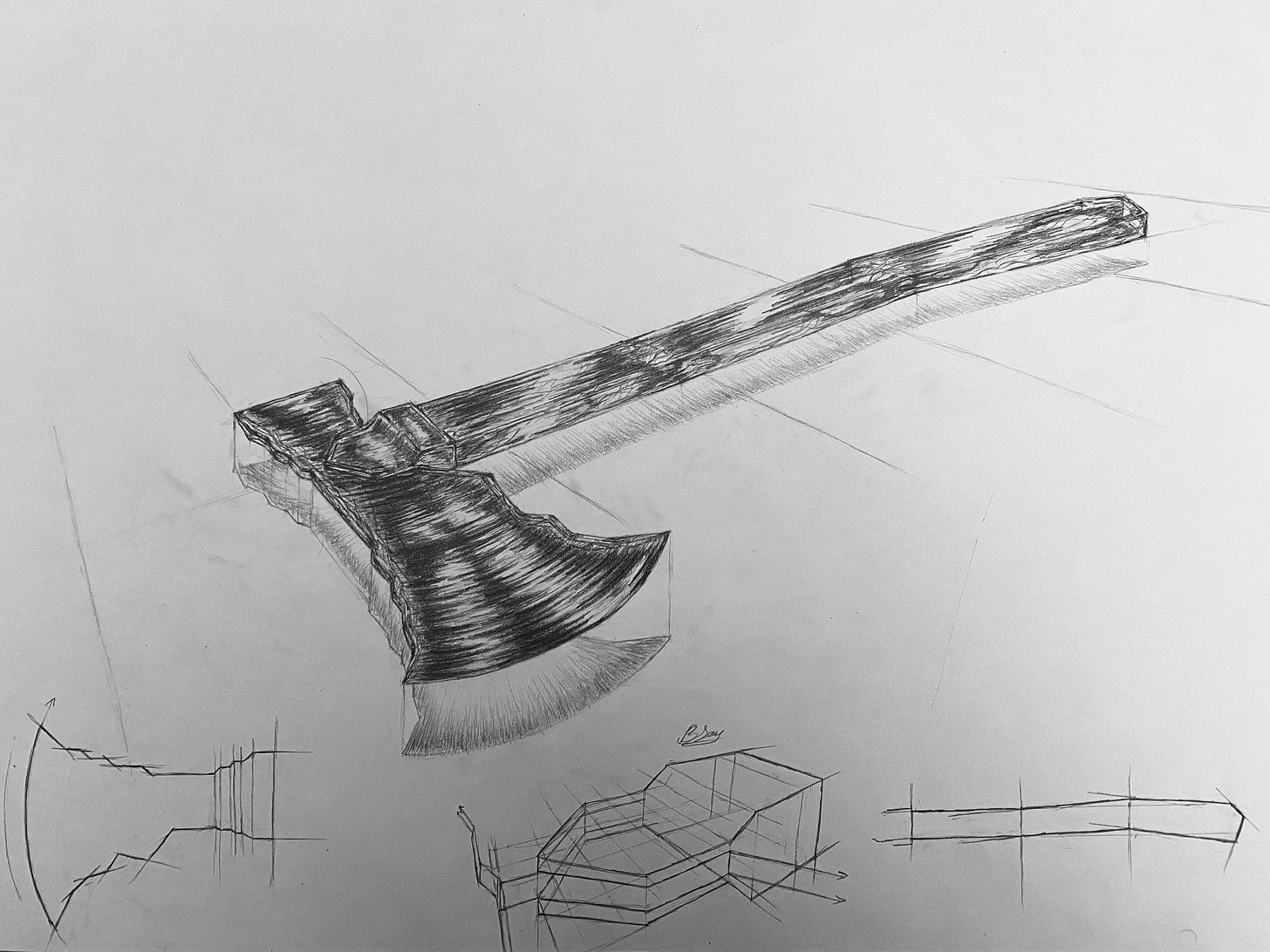Obsidian is a naturally occuring volcanic glass that emerges when felsic lava (lava rich in elements silicon, oxygen, aluminium and potassium) cools rapidly.1
How I came to have an actual piece of obsidian is I have been on a trip to Van, Turkey for the first time in my life. Laying in the East of Turkey, Van is a secluded beauty with beautiful natural sceneries: high plateaus, steep mountains, a sea-like lake with alkaline water, frozen lava seas, historical places and more...
In the entrance of one of the historical places called “Ishak Pasa Palace”, I saw a local man selling volcanic stones. Van has volcanic sites that has frozen lava seas because of a couple volcanic mountains. The man saw me looking at the stones, and said that he and a couple of his friends were mining those obsidians from volcanic rocks. There were obsidians with different shapes and sizes, but I got the one that has the most interesting structure to me:
It is interesting how obsidian looks kind of glassy under strong sunlight and stone-like under artificial light. I wanted to draw this beautiful stone. However, because I drew it while I was on travel, I could only work at night in a hotel room with limited artificial light, so I could not render the glassy look as good as it would have been under sunlight. But I still think I have been able to render how the light was reflected from the structure:
On the Mohs hardness scale, obsidian has a hardness of about 5.5, which is nearly equivalent to a pocket knife’s hardness. But because it is also a glass, its sharp edges are even sharper than our best metal knives: “Obsidian – a type of volcanic glass – can produce cutting edges many times finer than even the best steel scalpels. At 30 angstroms – a unit of measurement equal to one hundred millionth of a centimeter – an obsidian scalpel can rival diamond in the fineness of its edge.”2
Knowing that obsidian has been used in early ages by humans as tools, I wanted to design an obsidian tool:
This is an obsidian axe. I wanted to make it fully obsidian, including the handle. It was challenging to mix the glassy look and the stone-like look together. I tried to make its edges glassy by making them lighter overall, but darker on bending parts, while I drew the middle parts of it to be more opaque and stone-like.
In nature, there are many naturally occurring substances with interesting forms and properties, and I am glad I ran into obsidian while exploring a beautiful city.
Wikimedia Foundation. (2022, September 2). Obsidian. Wikipedia. Retrieved October 1, 2022, from https://en.m.wikipedia.org/wiki/Obsidian
Shadbolt, P. (2015, April 2). How stone age blades are still cutting it in modern surgery. CNN. Retrieved October 1, 2022, from https://www.cnn.com/2015/04/02/health/surgery-scalpels-obsidian/index.html







It seemed to me ilke an UFO when I see it for the first time in your post.
Your connection with axe was amazing.
Ben de obsidyen olsam da çizsen beni bahadııııırrr